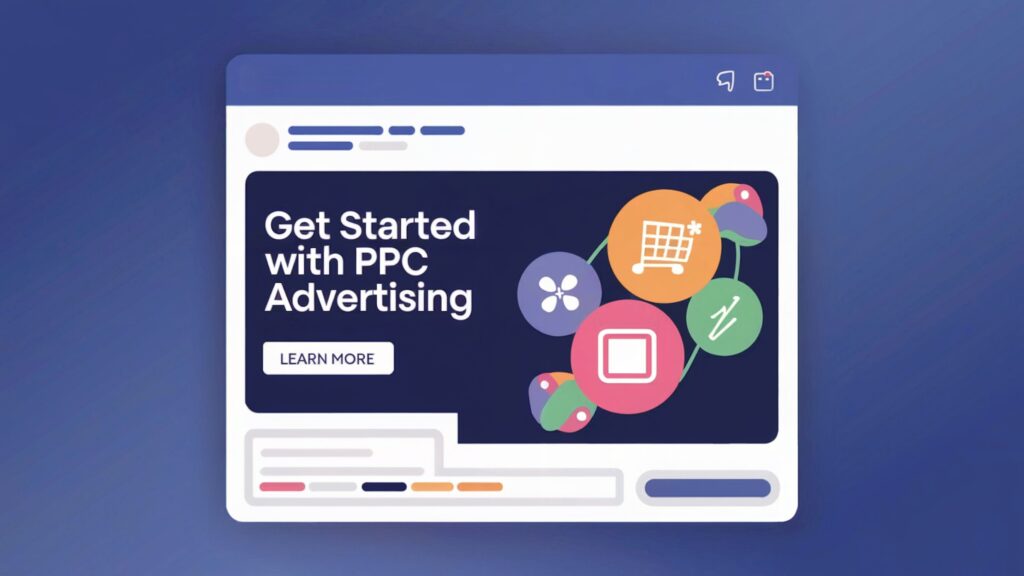
Did You Know?
It’s predicted around $351.5 billion will be spent on PPC advertising in 2025
In digital marketing, PPC stands for Pay Per Click and is a type of online advertising where businesses are charged depending on how many clicks an advert receives. Just how much each click costs depends on a wide range of variables, but the only time an advertiser will pay is when someone clicks the ad.
Offering an effective way to drive people to a website, landing page, app or anywhere else you want them to take action, PPC essentially enables you to pay for traffic. This is in contrast to organic optimisations and so typically works well when deployed in tandem with SEO.
The most common type of Pay-Per-Click advertising is Google Ads, formerly known as Google AdWords. This powerful platform can propel your website to the top of the results on a search engine that receives 8.5 billion queries every day.
Whilst search engine advertising is the most popular form of PPC, Amazon, Facebook and even Etsy all have their own platforms where it is possible to buy ads on a pay-per-click basis.
How Does It Work?
Each PPC advertising platform will have its own nuances when you delve deep into the setup, but fundamentally, they all function in the same way. A business will create an ad, be it text-based, image-based or a video, then target the ad to a specific audience of would-be customers.
When using something like Meta Ads, this will be done by pinpointing demographics that are most likely to be interested in your products or services. This could include aspects such as age, interests, employment or location.
However, when dealing with Google Ads, things work a bit differently. Within the campaign, the advertiser will stipulate several ‘keywords’ that their potential customers typically use when searching on Google. Then, when people conduct a search using these words and phrases, ads will appear relating to the query. Clicking the ad will take the user to a page on the business’s website, which is, again, relevant to what they’re looking for. Activities such as lead form completions, e-commerce purchases and phone calls can then be tracked and reported so that the performance of each keyword can be analysed and optimised.
There are types of Google Ads campaigns that don’t use keywords and instead work in a similar way to the Meta Ads mentioned above, but vanilla, entry-level Google Ads (known as Search campaigns) are powered by the keywords you select.
What Are The Benefits Of PPC Advertising?
There are many reasons why you might choose to run PPC ads. Some of the key benefits include:
- Full control over how much you spend
- The ability to drive highly relevant traffic to your website
- Gain almost instant visibility
- Appear on page one of the search results
If you get it right, the relevance and visibility offered by Google Ads will produce a fantastic return on investment, particularly when clicks can cost as little as a few pence. And with the ability to choose the keywords you target and decide precisely how much you would like to spend, the platform provides a cost-effective way to boost your business’s performance.

Where To Start With PPC Advertising
Once you have decided to test the waters with Pay Per Click, it can be difficult to know where to start. The Google Ads platform is a bit daunting at first, especially if you are not familiar with the vernacular used to refer to its different aspects.
The first thing to do is decide which of your products or services you are going to advertise. You may feel like you want to promote everything you have to offer but, unless you have a seriously large budget, this is not the best approach to take. How you go about choosing which area to cover is up to you. You could opt for what is already popular, choose products based on their value or select those that have the highest margins.
Next, you need to determine which type of campaign you’re going to run. For e-commerce brands, a Shopping or Performance Max campaign could be the most appropriate, but others may want to start with a Search campaign.
With a Shopping or PMax campaign, it’s usually obvious how your products should be organised, and these will become your Asset Groups. However, when creating a Search campaign, you will need to separate your keywords into campaigns and ad groups. This way, you can dictate how much budget goes to each area and maintain high relevancy with your ad copy.
Try to group keywords by intent, so that you can put more focus on important phrases like ‘boiler installation’ and less on research-based queries such as ‘pros and cons of an air-source heat pump’.
If you’re looking for some help and guidance on how to successfully run your PPC campaigns, contact the experienced team at Reach Digital. We can ensure you get the most return from any activity and avoid your money being wasted on ineffective ads. Get in touch via the website or call us on 01206 580202.

About the author
Chris Mayhew has great experience in a wide range of digital marketing practices, focussing predominantly on paid media. By implementing iterative A/B tests, he optimises Google and Meta Ad campaigns to maximise results.
Did you find this article useful? Share it with a friend or colleague